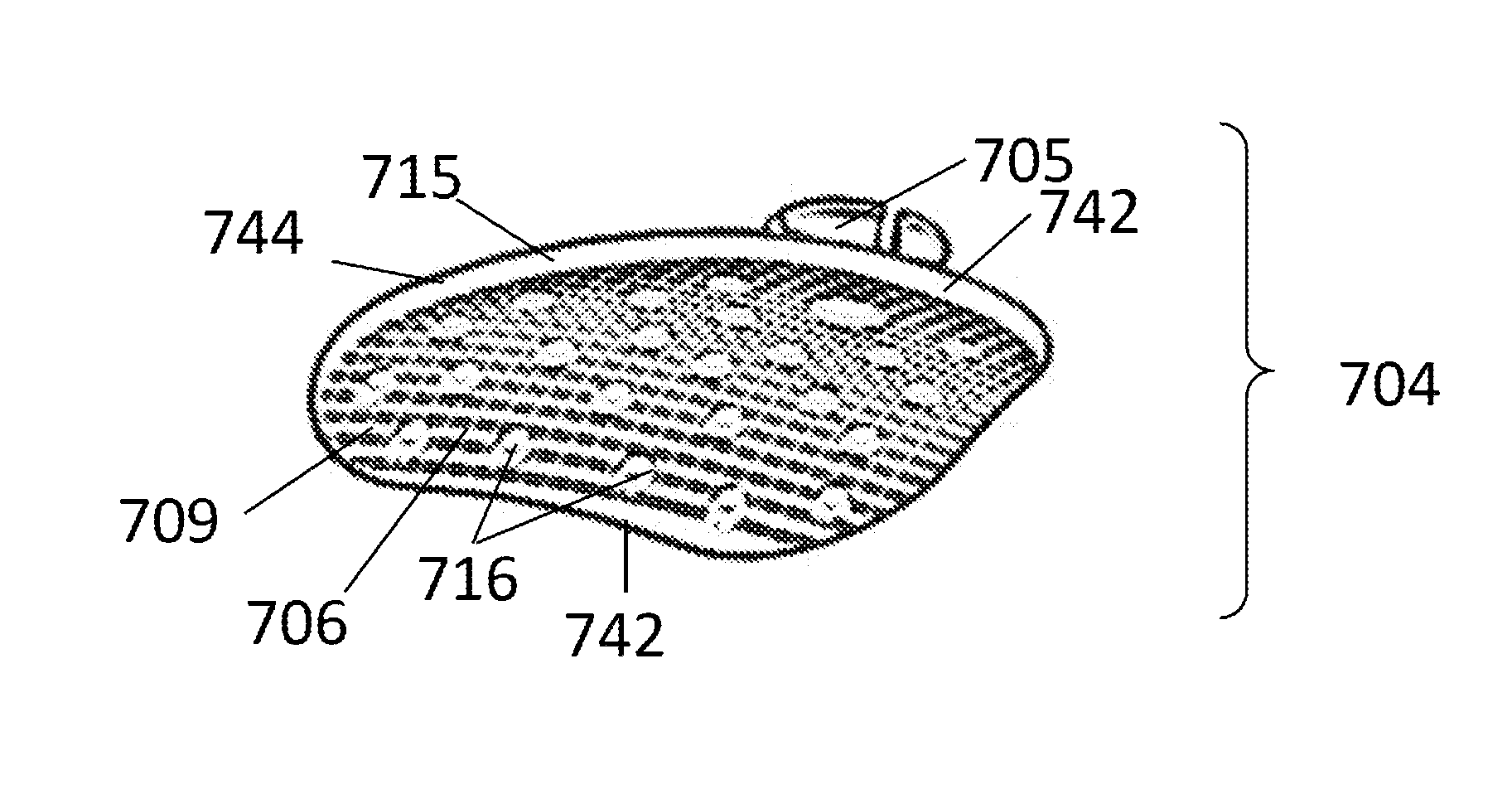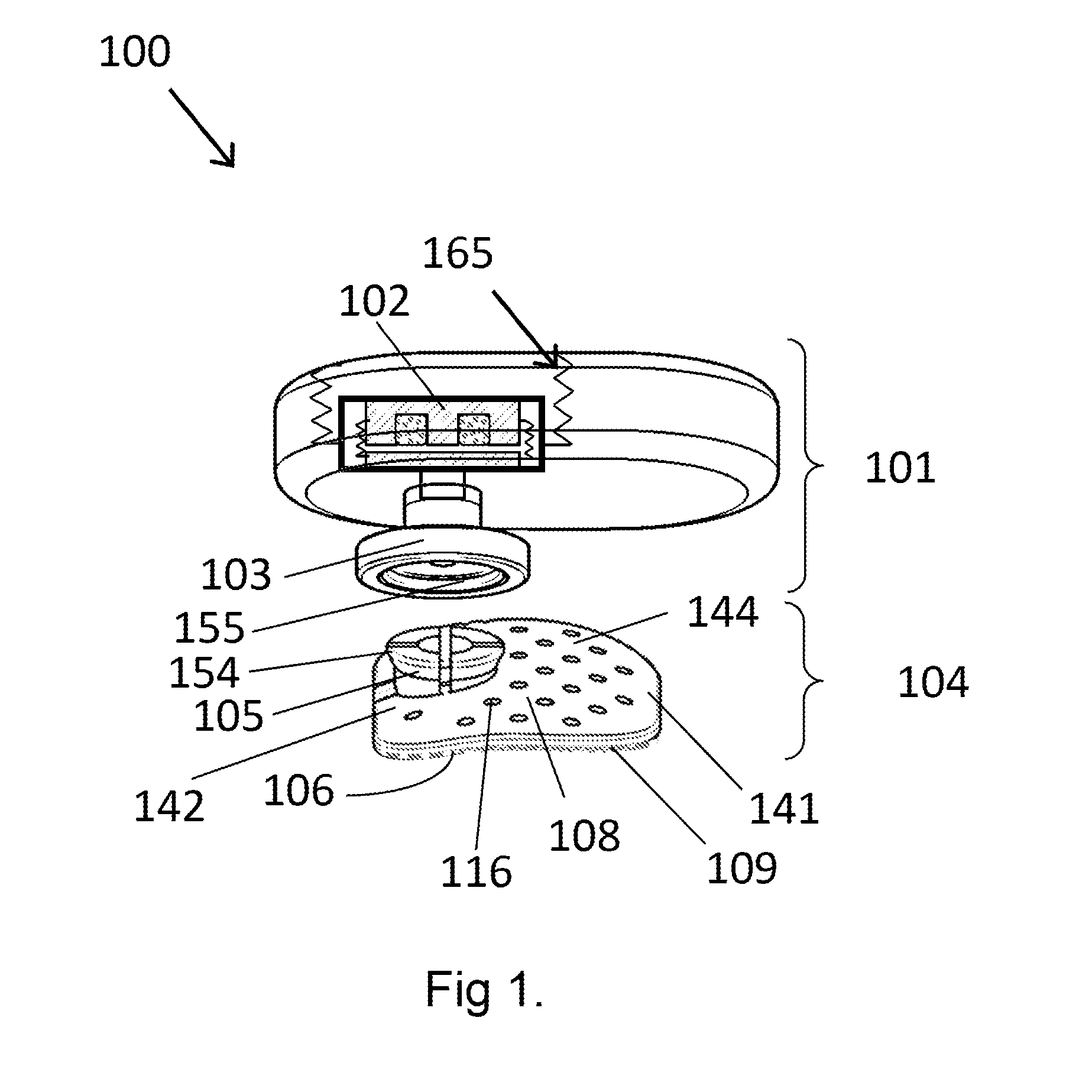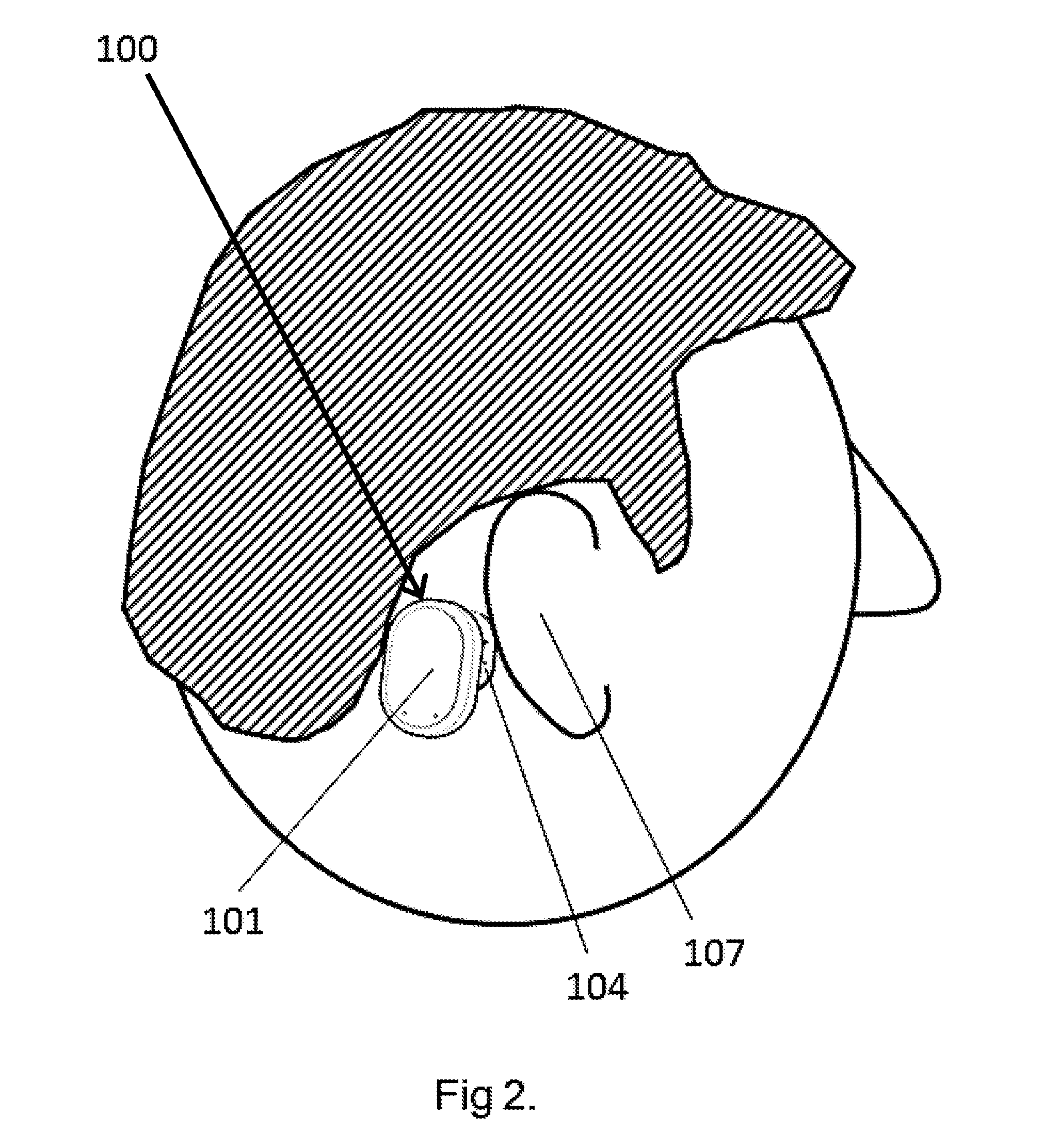Bone conduction hearing aid system
a hearing aid and bone conduction technology, applied in the field of hearing aid systems, can solve the problems of headaches and skin irritation, poor blood supply and irritation, constant pressure on the skull bone, etc., and achieve the effects of low cost, low manufacturing cost, and easy manufactur
- Summary
- Abstract
- Description
- Claims
- Application Information
AI Technical Summary
Benefits of technology
Problems solved by technology
Method used
Image
Examples
Embodiment Construction
[0039]One important realization and insight of the present invention is that it is possible to provide an effective hearing aid system without the need for the contact portion of the hearing aid device applying a pressure on the bone behind the ear to improve the transmission of the sound. It was a surprising discovery that although a hearing aid device 101 of the present invention must use a more powerful vibrator 102 and is therefore heavier than conventional hearing aid devices (which is against conventional thinking of using devices that are as light as possible), these drawbacks are outweighed by the advantages of a better adhesion to the skin (since there is no pressure from a protrusion that counteracts the adhesion force), less skin irritation (because the skin becomes more irritated when subject to constant pressure) and less complicated contact portion (since there is no need for any adjustment mechanism to adjust the pressure applied). Another important feature of the pre...
PUM
 Login to View More
Login to View More Abstract
Description
Claims
Application Information
 Login to View More
Login to View More - R&D
- Intellectual Property
- Life Sciences
- Materials
- Tech Scout
- Unparalleled Data Quality
- Higher Quality Content
- 60% Fewer Hallucinations
Browse by: Latest US Patents, China's latest patents, Technical Efficacy Thesaurus, Application Domain, Technology Topic, Popular Technical Reports.
© 2025 PatSnap. All rights reserved.Legal|Privacy policy|Modern Slavery Act Transparency Statement|Sitemap|About US| Contact US: help@patsnap.com



